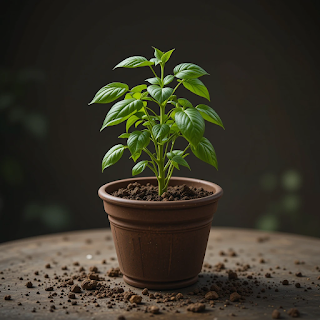How to Grow Spinach: A Complete Guide
Spinach is one of the most nutritious and versatile leafy greens you can grow in your garden. With its quick growth cycle and adaptability to cooler temperatures, it's perfect for both beginner and experienced gardeners. Here's everything you need to know to successfully grow spinach in your garden.
Planting Basics
Spacing
- Seed spacing: Plant seeds 1 inch apart in rows
- Row spacing: Keep rows 12-18 inches apart
- Final spacing: After seedlings emerge, thin to 3-5 inches apart for baby spinach or 6-8 inches for full-sized leaves
Light Requirements
Spinach grows best in:
- Full sun in cool weather (spring and fall)
- Partial shade (4-6 hours of sun) in warmer weather
- Morning sun with afternoon shade works particularly well in hotter climates
Temperature Preferences
- Optimal soil temperature for germination: 45-75°F (7-24°C)
- Ideal growing temperature: 50-70°F (10-21°C)
- Bolting temperature: Spinach will bolt (go to seed) when temperatures consistently exceed 75°F (24°C)
Days to Germination
- 5-14 days depending on soil temperature
- Fastest germination occurs at 70°F (21°C)
- Slower germination in cooler conditions
Soil Preparation
Spinach thrives in:
- Well-draining, loamy soil
- pH between 6.5-7.5
- Soil rich in organic matter
- Add compost or well-rotted manure before planting
Planting Times
Spinach is a cool-season crop that can be planted:
- Spring: 4-6 weeks before the last frost date
- Fall: 6-8 weeks before the first frost date
- Winter: In mild climates, plant in late fall for winter harvests
- Succession planting: Sow seeds every 2-3 weeks for continuous harvests
Watering Needs
- Keep soil consistently moist but not waterlogged
- Provide about 1-1.5 inches of water per week
- Water at the base of plants to prevent disease
- Mulch around plants to retain moisture and suppress weeds
Fertilization
- Apply balanced fertilizer before planting
- Side-dress with nitrogen-rich fertilizer when plants have 4 true leaves
- Avoid over-fertilizing as this can lead to nitrate accumulation
Common Problems and Solutions
Pests
- Aphids: Spray with insecticidal soap or a strong stream of water
- Leaf miners: Remove affected leaves and use row covers
- Slugs: Use diatomaceous earth or slug traps
Diseases
- Downy mildew: Improve air circulation and avoid overhead watering
- Damping off: Use sterile soil and avoid overwatering seedlings
- Fusarium wilt: Practice crop rotation and use resistant varieties
Harvesting
- Baby spinach: Harvest when leaves are 2-3 inches long (about 25-30 days after planting)
- Full-sized leaves: Harvest outer leaves when they reach 4-6 inches (about 40-50 days after planting)
- Harvest in the morning for best flavor and crispness
- Cut leaves 1 inch above soil line to encourage regrowth
Varieties to Consider
- Savoy spinach: 'Bloomsdale' has crinkled leaves and excellent cold tolerance
- Smooth-leaf spinach: 'Space' and 'Olympia' are easy to clean
- Baby spinach varieties: 'Baby's Leaf' and 'Catalina'
- Heat-resistant varieties: 'New Zealand' (technically not spinach but similar) and 'Malabar'
Tips for Success
- Soak seeds overnight before planting to improve germination
- Use shade cloth in warm weather to extend the growing season
- Plant spinach with companions like radishes, strawberries, or peas
- Avoid planting near potatoes or members of the cucurbit family
Growing spinach is rewarding and relatively simple with these guidelines. Its quick growth cycle means you'll be enjoying fresh, homegrown spinach in just a few weeks after planting!
.jpg)




























